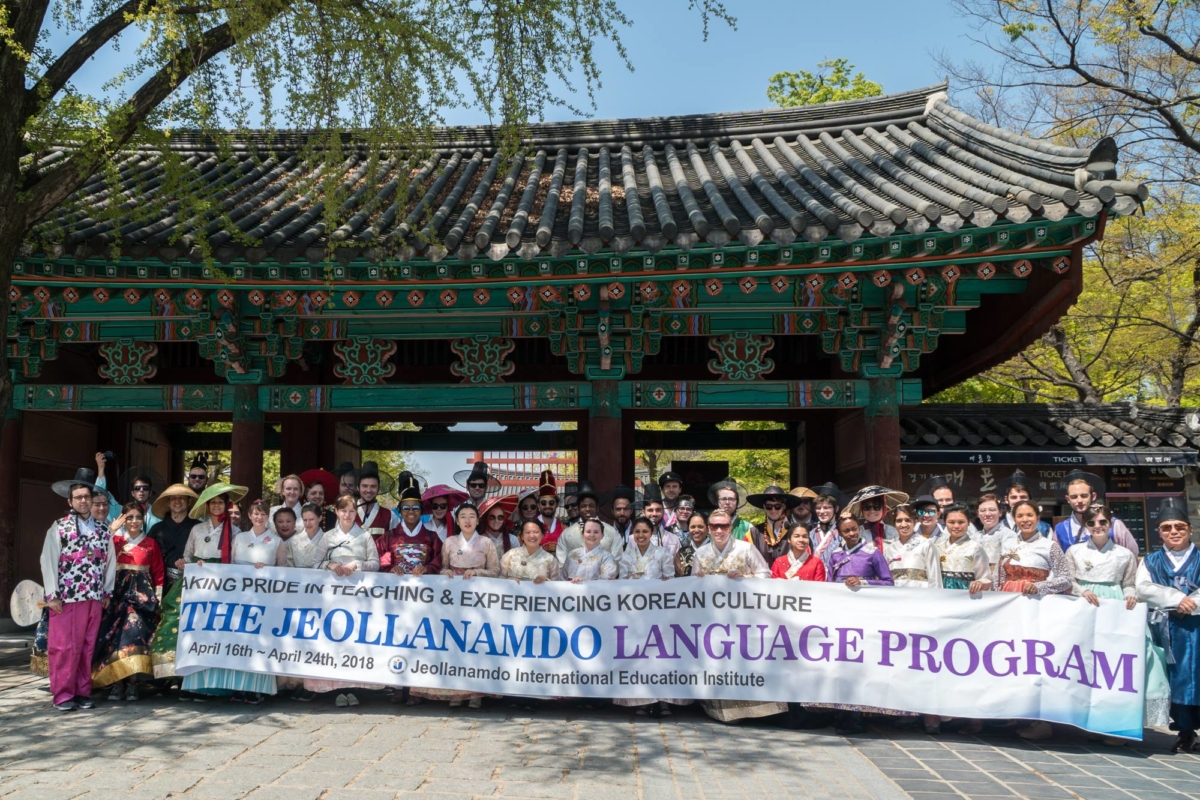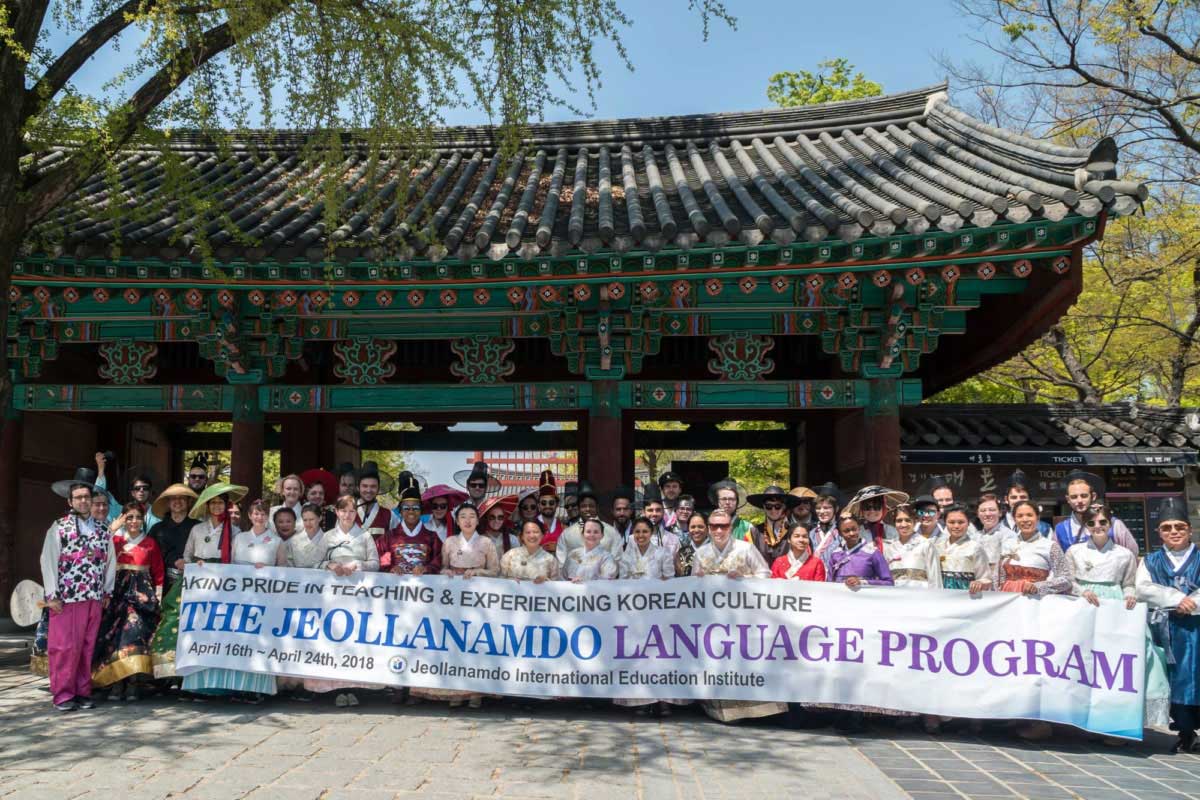https://www.gooverseas.com/company-news/teach-abroad-community-choice-awards
Gooverseas is a website which stores reviews on teaching positions, TEFL courses, study abroad programs, and reviews on a range of other programs designed to give information to the internationally inclined audience. This year is the 1st year Gooverseas has recognized the very best in each category. Winners were chosen by their 1,000,000+ strong community, based solely on their program reviews, across all countries and all programs.

Korean Horizons was the only Korean company selected. Our very own teachers have reviewed us very favorably and we currently have 98% over 79 reviews.
I'm very happy that we are getting the recognition that we deserve :)

This post was originally published at Adventures of Mike

My first three weeks in Korea have been a very busy and exciting time! Now that I have settled in, I'm planning to keep this blog up to date with stories of my experiences, travel guides, teaching recommendations and much more. I'll also be sharing guides and stories from my past experiences living in the Czech Republic, Australia, New Zealand, and the Netherlands and traveling throughout Europe and Oceania.
For now, however, I thought I'd start with a general summary of the process I went through to get to Korea. Of course, it's important to note that this is a summary of my own experiences and, as was repeated over and over to us at orientation "everything depends."

Public or Private?
If you are thinking of coming to Korea to teach English, I highly recommend reading as much as you can about others' experiences. By and large, people seem to have an awesome time here and get a lot out of it; but many factors lead to a diverse array of experiences. Some of these include whether you choose to work for a hagwon (private academy) or for the public school system (EPIK), which region of the country you are placed in, whether you have an urban or rural placement, and how open you are to culture shock!
I chose to apply through EPIK for positions in the public school system. In my view, the benefits package for public school teachers is much better than for hagwon teachers. You get much more vacation time (18-32 days depending on your province), a guaranteed 9-5 work schedule with overtime pay, and the peace of mind of knowing that the government is paying you, and that your school won't shut down tomorrow if it's not making enough of a profit. You are also sure to get a round trip flight allowance of 2.6 million won, and a settlement allowance of 300,000 won. Many peoples' flights end up costing less than that, but they get to keep the money anyway. That's a pretty good deal, especially compared to hagwons, which increasingly are only offering a one-way flight, despite offering round trip flights as standard practice in the past. Public school teachers also have the benefit of a week-long orientation program, and the support of a co-teacher.
While people certainly have positive hagwon experiences, the general consensus of teachers I've talked to who have done both is that public school positions are much better, for these reasons and many more.
EPIK (English Program in Korea)
The disadvantages to EPIK are that you aren't guaranteed a chance to work in your preferred location, and that the application process involves more time, effort, and red tape. Therefore, if you are thinking of applying for public school positions, I highly recommend going through a recruiter. They have connections for the best positions and tons of experience helping clients to submit the best possible application. I went through Korean Horizons, and my recruiter Alistair was extremely helpful to me every step of the way, even taking an hour of his time to prep me for the interview. He helped me through the complex process of gathering the many documents that were needed to secure my visa, and even sent me a "welcome package" when I arrived in the country.
The vast majority of EPIK applicants apply to be in Seoul or Busan, Korea's two largest cities. There are only so many positions available in these cities and competition is fierce. Since I was applying for a late intake (April), there simply weren't any positions in Busan available, even though I listed it as my preference. If you are dead set on going to Seoul or Busan, don't take it for granted that EPIK will place you there just because you have a good résumé. I have a Master's in Secondary Education, a U.S. teaching certification, a CELTA, and two years of international teaching experience. At the end of the day, EPIK had its own needs. When my placement finally came in, I was told I had been placed in South Jeolla province (known as Jeollanam-do in Korean); a part of the country I had never heard of! A quick Google search revealed to me that it is the least developed province in South Korea. There was no information about which city (or rural backwater) I would be placed in, and I was told that I would learn this information when I arrived at orientation, as is standard EPIK practice.
The Jeollanamdo Language Program (JLP)

I'll be honest; at the moment I describe above, I felt cheated, and considered taking a position at a hagwon so that I could be in Busan. But I decided to take a step back, take a few deep breaths, and keep an open mind. I'm now so happy that I did, because it turns out that the Jeollanamdo Language Program offers the best benefits package of any province in Korea that I am aware of. Unlike most EPIK teachers, who receive 18 days of paid vacation and hagwon teachers who only get 7-10, JLP teachers receive a whopping 32 days of paid vacation. JLP is also administratively separate from the rest of EPIK, and runs its own amazing orientation, which I will talk more about below. In fact, until this year, JLP actually did its own recruiting, separate from the rest of EPIK. The province has a Canadian regional coordinator who has been living here for 12 years, and is super knowledgeable, helpful, and supportive, and available as a resource to you for the duration of your contract.

JLP does have many quite rural placements. My roommate from orientation is currently placed on the island of Jindo, for example. It's worth noting, however, that Jeollanamdo is relatively small, and you are never more than an hour or two from a city. The largest city in the province is Gwangju, a vibrant, artsy city of 1.5 million with an international vibe and very interesting and proud history. I'm lucky enough to be placed within a 40 minute bus ride and 30 minute drive from there, in the town of Nampyeong. And from Gwangju, it's only a 2-3 hour train ride to Seoul. I'm also about 15-20 minutes from Naju and Bitgaram, which are smaller cities but with a lot to offer. The other major cities in the province are Yeosu, Mokpo, and Suncheon.
Of course, city life isn't everything! While I do like the culture and vibrancy of a major international city when living in such a foreign environment, I also grew up in a small township in Pennsylvania of about 900 people, 10 miles north of a "city," with a population of 70,000. As such, I love hiking, cycling, bodies of water, and just generally soaking up nature and the great outdoors. It turns out I'm in luck, because Jeollanamdo is a hikers paradise, with major destinations such as Mudeungsan National Park. Every town and city also has several mountain trails that are free and open to the public.
Orientation

Our orientation took place in the beautiful waterfront city of Yeosu, on Korea's southern coast. JLP put the group up in the DS Hotel and nearby Noble Hotel. I can only speak from my experience at DS, but it was a lovely hotel. The room contained two very comfortable beds, one double and one single. We were well fed every day for breakfast, lunch, and dinner. The bathrooms even had heated toilet seats!
The bus ride from Incheon airport was about 4 hours. I was very happy that I had arrived in Korea a few days in advance. Not only did I get to explore Seoul a bit with a friend of mine who had just cycled from Sweden across Asia (more details in a later post!), but I also had the opportunity to adjust to the time and get over the worst of my jet lag. Still, JLP was sensitive to the long journey, and the first day or orientation simply consisted of a brief opening ceremony, our medical checks, and a chance to rest.

Most of the orientation consisted of a 9-5 schedule of information sessions on teaching and Korean culture, demo lessons, and familiarizing ourselves with our contracts. On day 1, we received our school placements. However, I did receive a bit of a surprise when I met my co-teacher. Although my placement card simply said "Nampyeong Elementary School," it turned out that I was working at Nampyeong English town! I'll explain the difference a bit more in a later post, but it was a pleasant surprise, as English towns are meant to be fun places for students from around the area to go on a field trip. No teaching from a boring textbook!

Probably the most memorable part of the orientation was visiting the Hanok Heritage Village in Jeonju. This area is full of traditional Korean houses called hanok, which stand in stark contrast to the modern high rises and skyscrapers that have come to cover much of the southern part of the peninsula. We were dressed up in traditional Korean costume (hanbok) for this excursion, which provided quite high quality entertainment to the Korean teachers and school officials, as well as the locals. Overall it was a great day in a fun (if touristy) area. We also had the opportunity during the week to attend the Yeosu busking festival, and to hike to the top of a small mountain whose name now escapes me.
During orientation, we had plenty of time to socialize with the 40 or so teachers in our intake. It is agreat group of people and we had a lot of fun getting to know each other and exploring our new surroundings. The orientation is definitely a big advantage to public school teachers in this regard. While hagwon teachers often land in Korea and are expected to start teaching right away, with little to no adjustment time, we were introduced to our jobs, support and social network from the very beginning. At the end of our orientation, we met our co-teachers who drove us to our (school-provided) apartments. Mine has be extremely helpful with all aspects of settling in, including helping me buy furniture online, giving me extra kitchen supplies, and taking me to immigration to fill out the forms for my Alien Registration Card (ARC).
